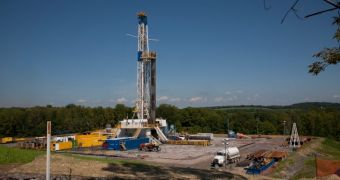Earlier this week, researchers with the Purdue and Cornell universities released a new study bound to further fuel already widespread opposition against the practice of hydraulic fracturing.
The study, published in Monday's edition of the journal Proceedings of the National Academy of Sciences, says that, according to evidence at hand, fracking sites cough out way more methane emissions than estimated.
This would not be such a problem if it were not for the fact that, as documented by other studies, methane is a powerful greenhouse gas. In fact, it is said that this compound is about 33 times worse than carbon dioxide, which has long been the poster child of global warming and climate change.
This means that, even if natural gas is actually cleaner than coal when used in energy production, the fact that hydraulic fracking sites release noteworthy amounts of methane is likely to offset any of the benefits that might arise from using natural gas instead of coal. Think Progress says that, as part of their investigation into the ecological footprint of fracking sites, scientists used a plane to survey the Marcellus Shale. This allowed them to pin down seven gas wells whose methane emissions revolved around 34 grams per second.
These wells were all in their drilling stage at the time when they were surveyed, i.e. in June 2012, meaning that natural gas production had not yet begun at these fracking sites, the Purdue and Cornell universities specialists detail in their paper.
Still, given the fact that the documented emissions of 34 grams of methane per second are way higher than the average previously estimated by the Environmental Protection Agency in the United States, i.e. 0.04-0.30 grams per second, it is no wonder that specialists are worried.
“These findings present a possible weakness in the current methods to inventory methane emissions and the top-down approach clearly represents an important complementary method that could be added to better define the impacts of shale gas development,” researcher Paul Shepson said in a statement.
“This small fraction of the total number of wells was contributing a much larger large portion of the total emissions in the area, and the emissions for this stage were not represented in the current inventories,” he added.
Seeing how small amounts of methane can have a dramatic effect in terms of fueling climate change and global warming, the researchers are asking that the Environmental Protection Agency move to both document and limit such leaks at hydraulic fracturing sites.

 14 DAY TRIAL //
14 DAY TRIAL //